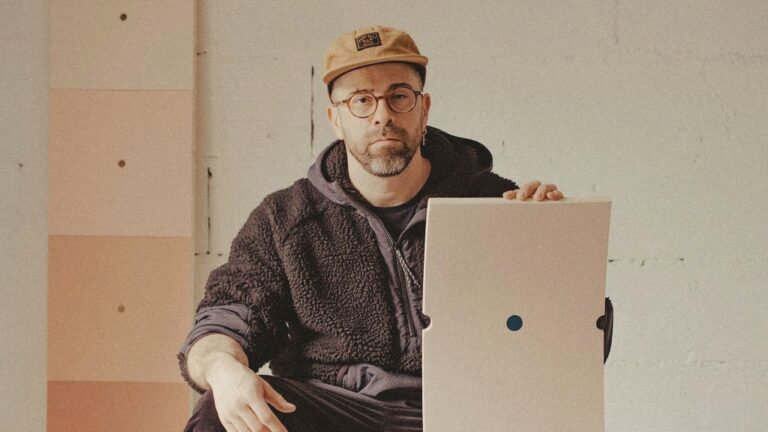
A Conversation with Alejandro Javaloyas
A Studio Visit During the La BIBI Residency
In 2016, Ania Catherine and Dejha Ti launched their art house Operator. The artist duo and ‘LGBT power couple’[1] recently moved from Los Angeles to Berlin, and are set to tour Europe with their latest projects. This ongoing collaboration of two conceptual artists merges technology, performance, and environments, resulting in award-winning and – more importantly – groundbreaking experiential artworks, elevating Digital and Immersive Art.
Their project-based artistic practice is marked by a layered understanding of immersion, guiding the viewer into an idiosyncratic world. Interactive large-scale installations offer a unique take on socio-political issues from our current digital architectures, the contemporary illusion of privacy, up to ethical issues related to deepfake technology.
Prior to forming their ongoing collaborative practice, both artists had their own solo practices. Ania Catherine, a choreographer, performance artist, and filmmaker, holds a master’s degree in Gender & Policy and works closely with the human body as both a tool and site for her artistic practice.[2]
Dejha Ti’s artistic background is slightly different. Ti is a multimedia artist and human-computer interaction (HCI) technologist, with no fixed allegiance to any particular medium. Having worked for 10+ years creating large-scale immersive and interactive installations, also directing and producing some of the most complex early livestreams, projection mapping environments, interactive audio-visual workflows, her work brings scale, and the knowledge of how to not only use, but be poetic with technology. Their combined works embody the logical and magical intersection where both of their individual practices meet.[3]
Beside Instagram being the platform responsible, ironically, for their modern romance (as they are a married couple in addition to their collaborative practice), it was art bringing both creative minds together. A perfect match on many levels, so it seems, as their collaborative works have been recognized with renowned art and design awards. In 2020, the duo won an ADC Awards for Experiential Design (Digital Experiences and Responsive Environments). The same year, they were shortlisted for the prestigious 2020 Lumen Prize for Art and Technology in the 3D/Interactive category for On View. In 2021, they were awarded a Lumen Prize in the Immersive Environments category, a Gold Cube from the 100th Annual ADC Awards, and an Honorary Mention for the S+T+ARTS Prize.[4]
The unique background of both artists results in so much more than flashy digital tricks and gimmicks. Instead of exploring the striking possibilities of technology in art, Ania Catherine and Dejha Ti distinguish themselves by focusing on the layered dynamics between humanity and technology, as well as between humans within our current digital landscape. This balance is explored from a kaleidoscopic point of view, incorporating both artists’ field(s) of expertise, such as human-computer interaction, ubiquitous computing, the body, choreography, gender studies, and beyond.[5]
Catherine and Ti state that immersion is not only a passive and merely physical state, but also an emotional and psychological one. With some of their self-imposed rules for art+technology being “don’t rely on scale” and asking themselves ”when the tech is no longer novel, will the work still hold up?” the duo is not shy in expressing what they believe to be the key pitfalls of Digital and Immersive Art.
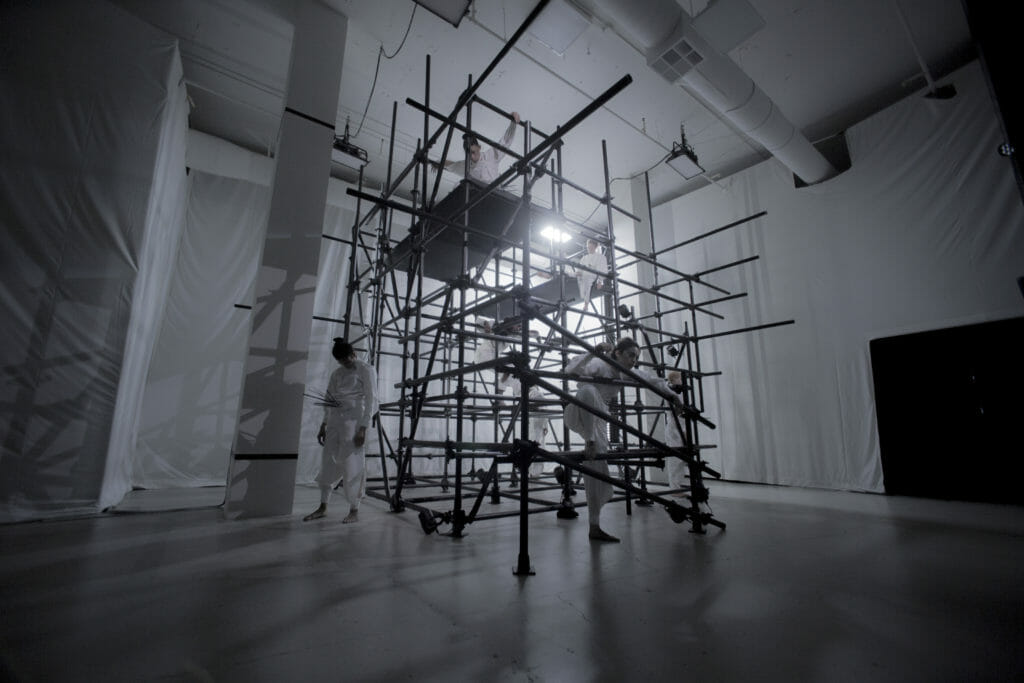
If one would try to categorize the projects of Ania Catherine and Dejha Ti in terms of art movements and the glossary of contemporary art history, we would end up with the following terms: Conceptual Art, Installation Art, Digital Art and Immersive/Experiential Art.
The first two are well-known by the public and are comfortably established in the realms of contemporary and/or ‘high’ art. However, when it comes to Digital Art and Immersive or Experiential Art, one encounters many challenges and pitfalls. As if we suddenly enter a minefield where neither the public nor the institutions seem to know what to make of or how to evaluate these new types of contemporary art. And to be fair, can we blame them?
Over the years, Digital Art has indeed been accepted as an art form. But how can we validate the quality of those artworks? What distinguishes Digital Art – as ‘high’ art – from selfie museums? How can we recognize and champion the pioneering artists elevating this currently precarious art form? Institutions dedicated to digital art such as Digital Art Museum (DAM), Museum of Contemporary Digital Art (MoCDA), and fairs such as Crypto and Digital Art Fair (CADAF) have played a key role in these questions, and the importance of knowledgeable curators in the digital space is increasingly paramount.
The same argument applies for Immersive and Experiential Art. With technologies such as video projection mapping, physical computing, computer vision, virtual and mixed reality, and spatial sound technologies, navigable 3D environments, art in the metaverse, Immersive Art is able to go beyond the forms of immersive installation artworks from the 1960s and 1970s – think of Yayoi Kusama’s Infinity Rooms (although knock offs of these are rampant), Helio Oiticica’s Tropicália installations, or 9 Evenings: Theatre and Engineering as part of Robert Rauschenberg and Billy Klüver’s Experiments in Art and Technology (E.A.T.). In an era of art experiences becoming social media content, which works are really leveraging technology’s transformative potential and which are simply delivering for the camera?
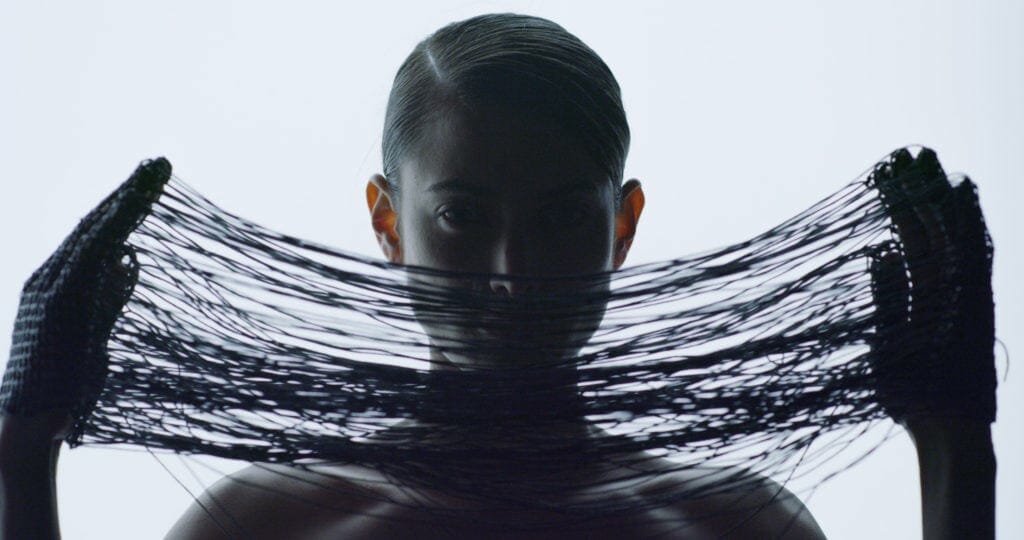
Understandably, with these exciting technological developments, all too often the focus of the artworks has been shifted from the subject matter to these new possibilities. Reminiscent of the earliest stages of moving pictures, Immersive Art seems to be in a stage which Tom Gunning described as the concept of the Cinema of Attraction.[7] As with the earliest films, the audience showed up in great numbers due to their curiosity and thrill for these new possibilities – moving pictures during the first decades of the 20th century, and now immersive technology during the first decades of the 21st century. Ania in past interviews has reflected on this, saying “it is almost like we’re calling each other on the phone and are so excited that the technology is connecting us that we forget to have a conversation.”[6]
As a result, all too often the starting point for Immersive and Experiential Art is to wow the audience. Monumental LED screens enwrap the viewer, dazzling our senses, but arguably numbing our mind. What distinguishes a 360-degree cinema from an Immersive Art installation? What makes a 3D Digital Art installation of swirling colors an artwork, and a 3D digital experience in a history museum just an attractive manner of education? Arguably, this aspect of a Cinema of Attractions is the key pitfall for Digital Art and Immersive Art being a minefield in the art world. A pitfall, but also a challenge to take on.
Ania Catherine and Dejha Ti do not take the flashy new possibilities as their starting point; they state the importance of “never relying on the novelty of a technology for a piece to be interesting”.[8] The beating heart and core of any project consists of a clear concept, idea or issue. They are not digital artists, but conceptual artists working with technology. As a result, they go beyond the tricks, gimmicks, and temptation of spectacle-reliance in digital and immersive art. The duo focuses on how technology is able to strengthen an artwork, implementing its new possibilities to examine, reflect, and understand broader social realities through these new digital architectures.
Even more, the artists often hide the technology in their work–the subject of their talk at Ars Electronica 2021 was use of invisible technology in their work – inspired by the original intent of ubiquitous computing a la Mark Weiser, when technology falls into the background of our lives rather than the center of it. They hide the cables, minimize the number of screens, and opt to go for a more subtle approach, refining the digital artwork resulting in a more profound, visceral, and intimate experience. These works demand an entirely different effort and participation from the audience. They do not aim to wow the audience, but to entice their mind, evoking critical thinking, resulting in new insights and a deeper understanding of socio-political issues and our social reality. Ania Catherine and Dejha Ti as they say, aim to produce a feeling, instead of a spectacle.
A first key work is one of the most ambitious works by Ania Catherine and Dejha Ti, titled On View from 2019. Commissioned by the SCAD Museum of Art, the seminal immersive experiential artwork examines how art experiences generate the audience’s wish to be the subject. Doing so, the visitor is literally put ‘on view’ by the artists.
The bigger picture also takes on how addictive interfaces, surveillance capitalism, and data privacy in modern society inform this phenomenon of our contemporary desire to be on view, without reflecting on what forces may be shaping this desire. The installation consists of three spaces for the audience to navigate through – (i) terms and conditions, (ii) stages gallery and (iii) the golden gallery. Doing so, the audience-participants enter an interactive and critical conversation on today’s digital architectures through, an immersive socio-political critique and experiment of art and technology.
What strikes me the most is how the installation does not appears or feels to be digital. Performers are connected to each other and the walls, seamlessly integrated into the environment; the piece feels very human, despite an overflow of technology. Even more, the installation needs the visitor, otherwise it does or shows absolutely nothing. As often with Catherine and Ti, the human presence is crucial. Possible conclusions are the necessity for tech literacy, the invisible presence of digital architectures in our everyday life, our vulnerability when it comes to small and frequent choices – think of unknowingly training facial recognition systems, or clicking “I agree” to a Terms & Conditions we never read.[9]
The artistic character of On View could not be further from spectacle-based Digital and Immersive Art. It is filled with humor and subtlety, as human-computer interaction slowly but surely becomes poetry. The technical foundation is completely intertwined with the conceptual foundation, as form and content are inextricably linked.
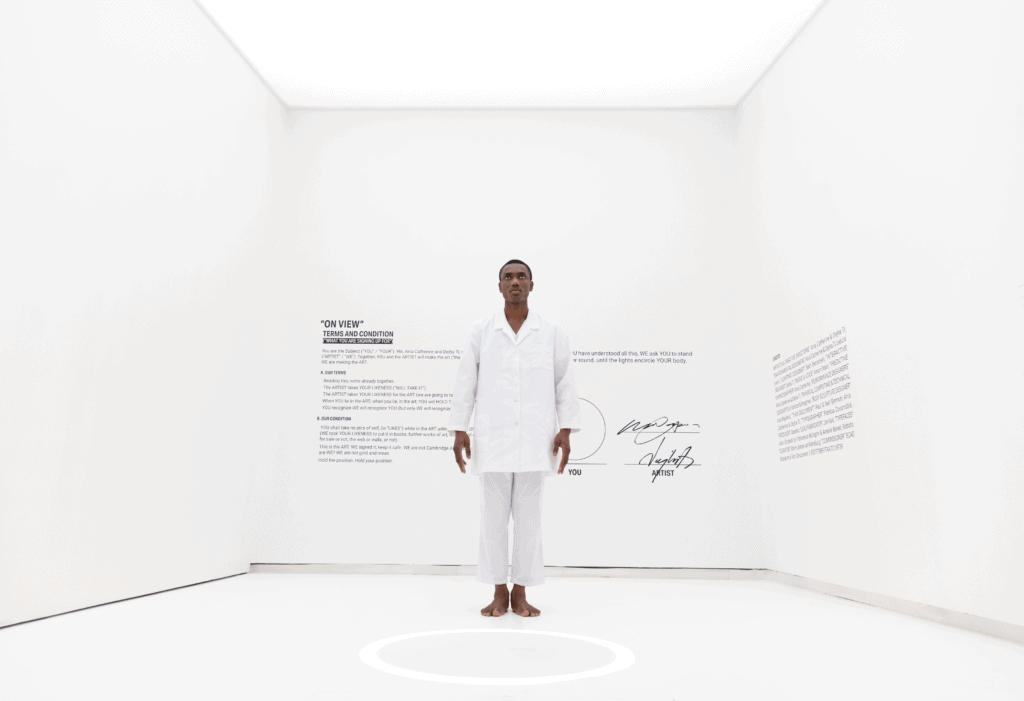
A second work project titled I’d rather be in a dark silence than from 2020 merges conceptual art, with fashion and function. It is a signal blocking and isolating trench coat created in partnership with Museum of Contemporary Digital Art (MoCDA) and in collaboration with fashion designer Barbara Sanchez-Kane. This coat was the first piece from Catherine and Ti’s Privacy Collection and has pockets lined with military grade fabric to keep wireless technologies offline.
In 2020, the coat was the centerpiece of a monumental installation, an immersive translation of privacy and anonymity which integrated photography, projection, poetry, performance, custom music, and an AR filter. The installation won the Lumen Prize for Art and Technology in 2021 and was praised by the jury for its multidisciplinary exploration of the potential for human agency while living in a web of surveillance capitalism, convenience culture, and data brokering.[10]
In an exemplary manner, the artists make a strong statement with this absurd and metaphorical action. They take measures to protect us, using a technique primarily used in law enforcement and digital forensics. A drastic measure against a drastic issue remaining still too unknown. I cannot help but once again note the poetic character, this time of these high-tech, high-fashion, and surreal coat-pockets.
The next chapter of I’d rather be in a dark silence than unfolds in Spring 2022; the themes surrounding this coat will be the basis of Ti and Catherine’s much anticipated venture into the crypto art/NFT space with their Privacy Collection. For this site-specific and experiential collection release, the artists shift their focus from the issues of web2, for a deep consideration of privacy, anonymity, and invisibility in web3.
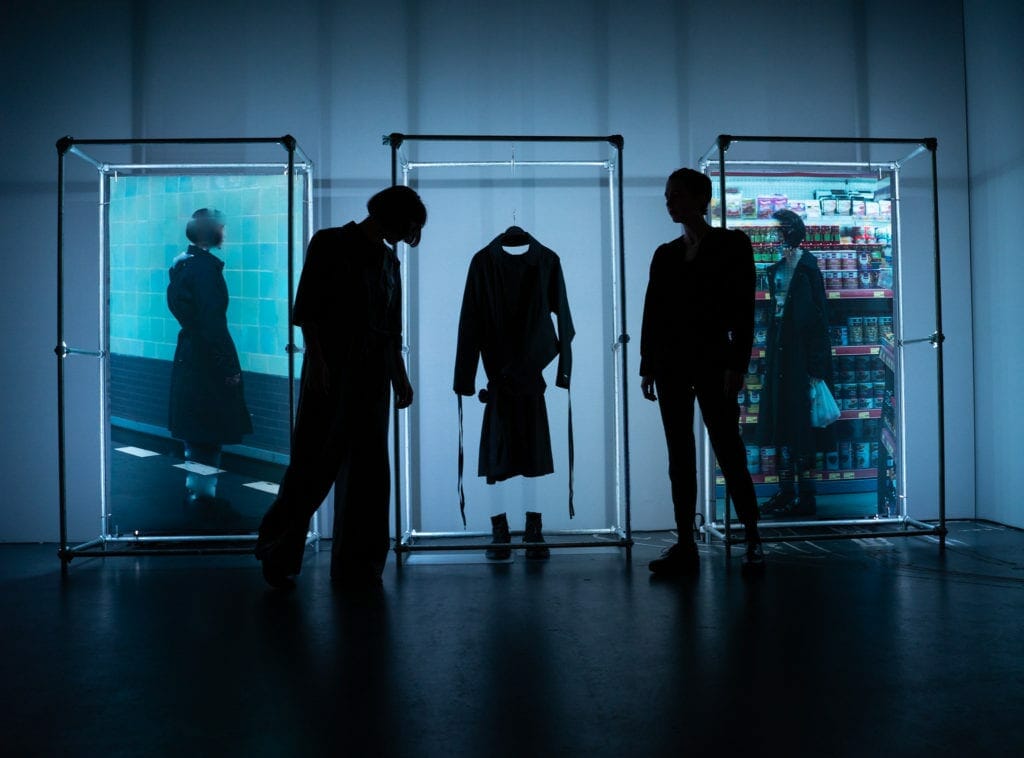
We conclude with one of Catherine and Ti’ latest projects titled Soft Evidence. This series of ‘slow synthetic cinema’ was created as part of the MediaFutures programme, an EU Horizon 2020 programme supporting projects that tackle misinformation.[11] The artists were particularly interested in the role of AV manipulation within that framework, with a focus on deepfakes – swapping faces or reproducing voices using artificial intelligence and computer vision – they created synthetic media depicting events that never happened.
Soft Evidence takes on two major issues related to deepfake technology. The first being the ability to depict someone doing or saying something they have never done. The second, the ability to escape accountability for actions caught on photo or video – e.g. a powerful public figure claiming a video showing them doing something problematic as being a fake video. As the artists have pointed out in past works and lectures, that conversations about technology are also always conversations about power. Deepfakes/synthetic media are a new frontier through which power dynamics that already exist, can manifest.
The synthetic cinema series depicts a protagonist performing a specific action, followed by a depiction of that same person – in a testimony style – denying that they’ve ever done that. They describe the importance of learning through feeling, and to achieve that, experiential presentation of Soft Evidence will produce productive confusion in the audience participant, as they won’t know what to believe. The overall aesthetics of this unique video artwork is more reminiscent of art house cinema than Digital Art, even though its creative process was loaded with very complex technological processes such as Artificial Intelligence, machine learning and deep learning.
Soft Evidence points out the increasingly unstable relationship between image and reality, emphasized by the problematic character of deepfake technology in a legal and/or political context. It also has an educational element, to help audiences understand how to navigate this synthetic media landscape, and also provides a neutral ground and starting point for this debate, to become aware of, and potentially take action.[12]
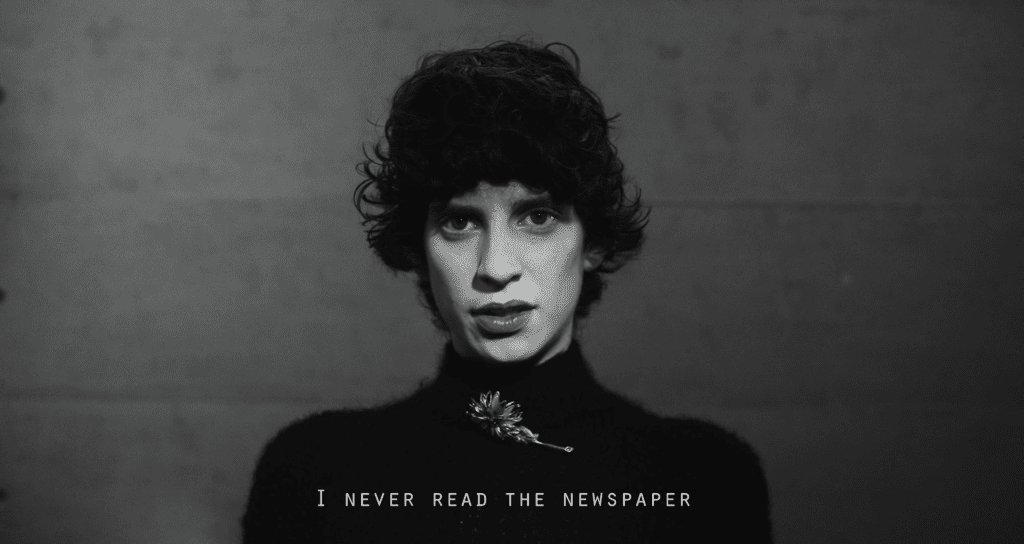
It is safe to say Tom Gunning’s theory of the Cinema of Attractions does not apply to the works of Ania Catherine and Dejha Ti. The artists don’t have stars in their eyes while considering the new possibilities of Digital Art, but are in search for a balance of what is progressive tomorrow, what is relevant today, and the pertinence in a(n) (art-)historical context from a retrospective point of view in the years to come. At the center, one does not find technology, but humanity.
Ania Catherine and Dejha Ti don’t aim to wow their audience. Instead of producing a spectacle, they produce a feeling. If they succeed in their approach, the technology becomes obsolete in a heartbeat. If one only holds on to the innovative character of ones artworks, it would not only be superficial in some ways, but also self-destructive. As the artist duo has stated; “Tech doesn’t age well, concepts do.”
They do not use their work to publicly display the technological possibilities of digital art, but examine how digital art can explore concepts, ideas, and make socio-political issues more accessible. Technology is a tool and an impelling force to achieve nuances, insights which would not have been possible without. Doing so, Catherine and Ti do not produce Digital Art for the sake of Digital Art. Nor do they innovate for the sake of innovation. They produce neo-conceptual art in a digital and immersive form, elevating the field of Digital and Experiential Art to higher spheres. Doing so, Catherine and Ti are one of the emerging artists to watch in 2022.
Notes:
[1] Flaunt, SCAD Museum of Arts Installation “On View” by Power Couple: Ania Catherine and Dejha Ti at https://flaunt.com/content/scad-ania-catherine-dejha-ti consulted 12/01/2022.
[2] Ania Catherine, About at https://aniacatherine.com/about consulted 12/01/2022.
[3] Dejha, About at http://dejha.com/about consulted 12/01/2022.
[4] Operator, About at https://www.operator.la/about consulted 12/01/2022.
[5] Ibidem note 1.
[6] Museum of Contemporary Digital Art, Ania Catherine and Dejha Ti at https://www.mocda.org/post/ania-catherine-and-dejha-ti consulted 15/03/2022.
[7] Tom Gunning, “The Cinema of Attractions: Early Cinema, Its Spectator and the Avant-Garde” in Wide Angle 8 (1986).
[8] Vimeo, Ars Electronica 2021: Ania Catherine and Dejha Ti at https://vimeo.com/672303262 consulted 15/03/2022.
[9] Operator, On View at https://www.operator.la/on-view consulted 13/01/2022 consulted 13/01/2022
[10] Operator, I’d Rather Be in a Dark Silence Than at https://www.operator.la/blog/id-rather-be-in-a-dark-silence-than consulted 13/01/2022.
[11] MediaFutures, Soft Evidence at https://mediafutures.eu/projects/soft-evidence/ consulted 15/03/2022.
[12] Ania Catherine, Soft Evidence at https://aniacatherine.com/soft-evidence consulted 13/01/2022.
Last Updated on April 19, 2024

A Studio Visit During the La BIBI Residency
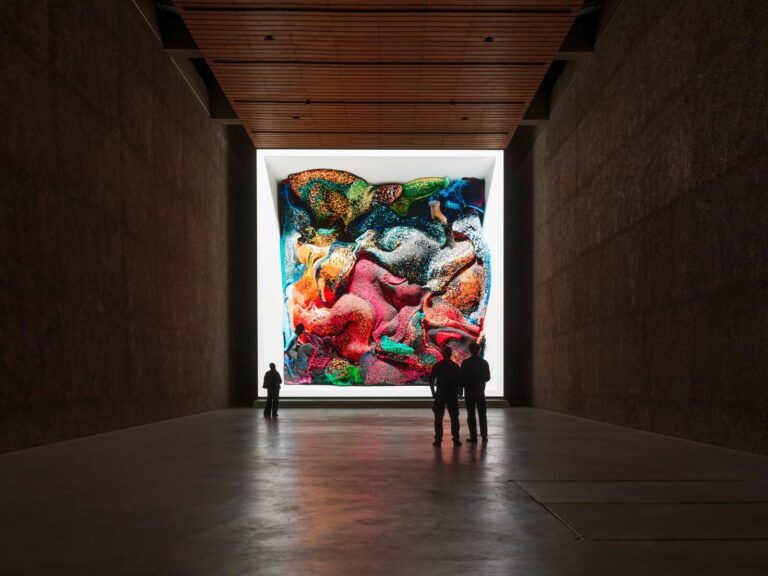
A Reasoned Anthology